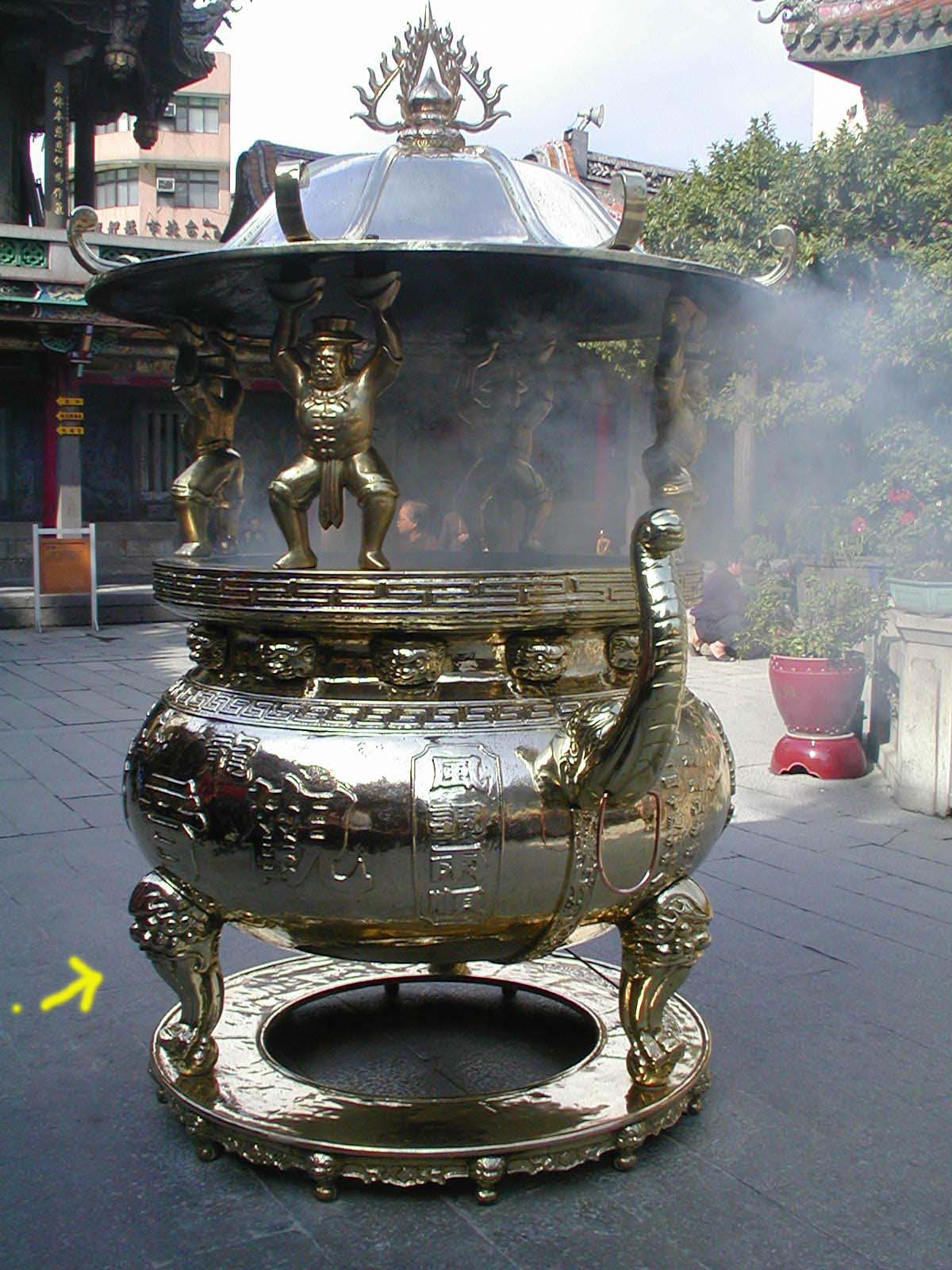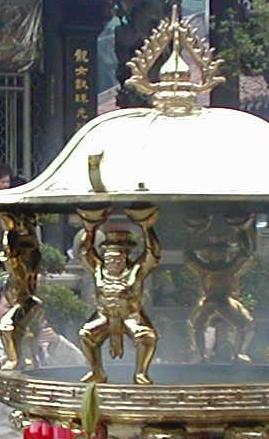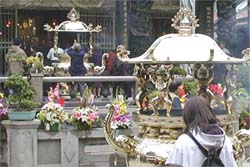|
 There
are seven censers at Lungshan Temple. It is customary to offer three
sticks of incense at each censer, for a total of 21 incense sticks. As
the incense sticks burn down, the ashes pile up high inside the big
censer, and people sometimes take a scoop of the ashes and put them in a
little bag to carry around or hang around the neck as an amulet. You can
also buy an amulet from the temple, in which case you have to take the
amulet and expose it to the incense smoke from the censer to have it
blessed. There
are seven censers at Lungshan Temple. It is customary to offer three
sticks of incense at each censer, for a total of 21 incense sticks. As
the incense sticks burn down, the ashes pile up high inside the big
censer, and people sometimes take a scoop of the ashes and put them in a
little bag to carry around or hang around the neck as an amulet. You can
also buy an amulet from the temple, in which case you have to take the
amulet and expose it to the incense smoke from the censer to have it
blessed.
Censers usually are three-legged. One of these legs (the one indicated
by the arrow in the photo) corresponds to the tripod’s vertical angle,
and this is the leg that points toward the god to which the censer is
dedicated. The one in this photo is dedicated to the boddhisatva Guanyin,
patron deity of Lungshan Temple.
|
|
 There
are two censers in the main hall, one dedicated to Guanyin and one to
the Jade Emperor. The worshipper first faces the main hall and offers
three sticks of incense to Guanyin, then faces the temple’s front gate
and offers three sticks of incense to the Jade Emperor, the
highest-ranking deity in the Chinese pantheon. There
are two censers in the main hall, one dedicated to Guanyin and one to
the Jade Emperor. The worshipper first faces the main hall and offers
three sticks of incense to Guanyin, then faces the temple’s front gate
and offers three sticks of incense to the Jade Emperor, the
highest-ranking deity in the Chinese pantheon.
An interesting detail on the
censers of Lungshan Temple is the “barbarians holding up the censer
hood.” The barbarians (han fan)
in question are Westerners. What do you suppose our forebears were
thinking when they designed the censers this way? It’s an interesting
question to speculate about.
|



![]()
![]()
![]()